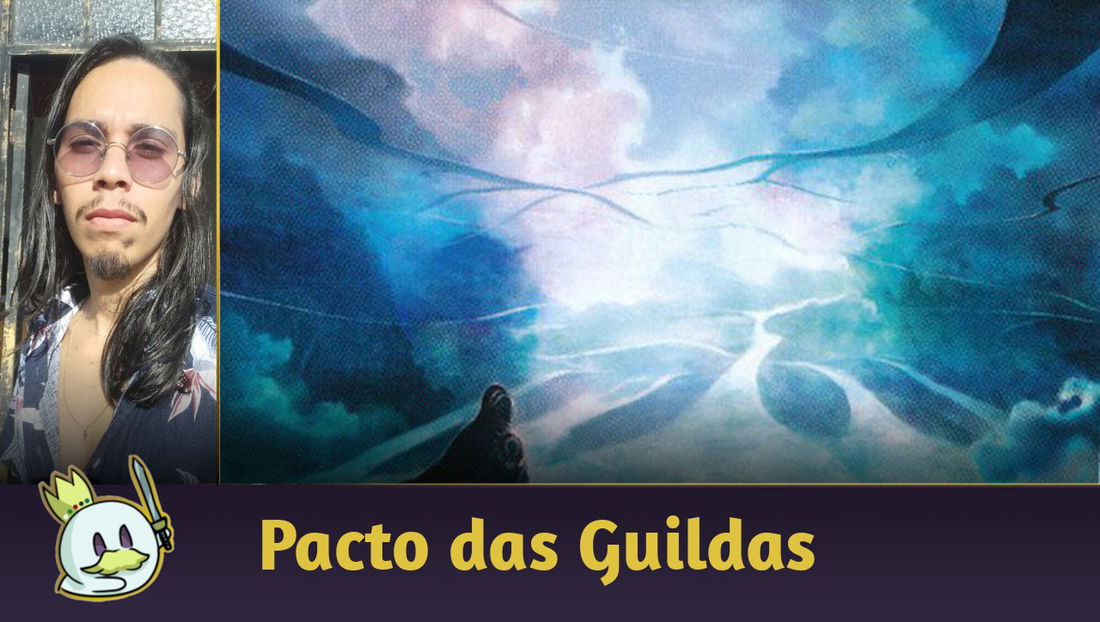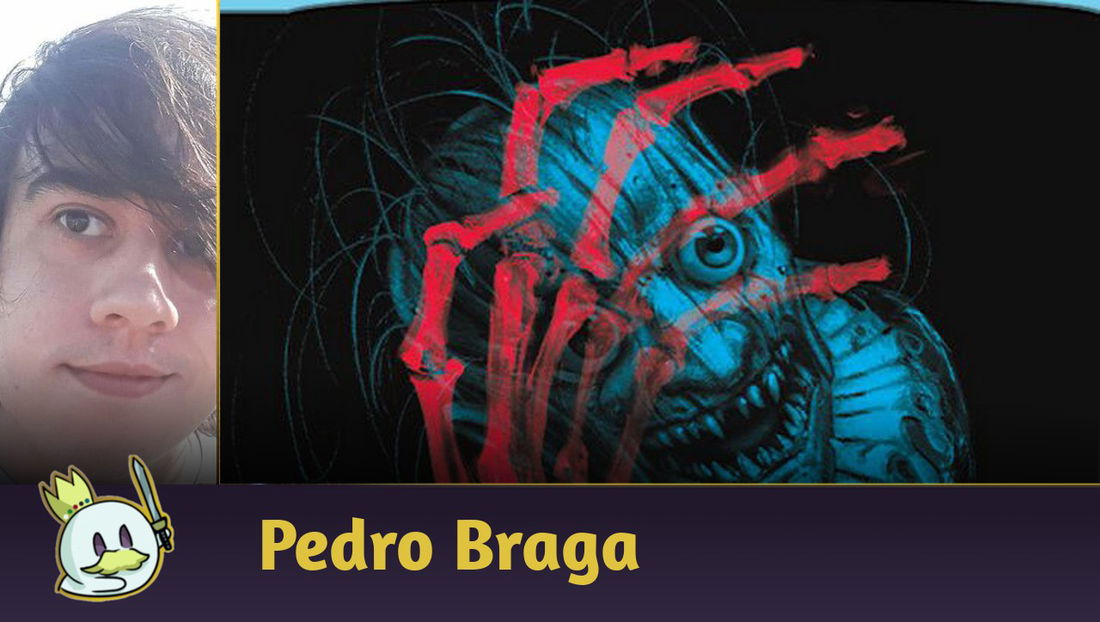Planeswalkers are one of the most revolutionary mechanics in Magic: The Gathering, introducing the game's central narrative characters to the gameplay.
In this article, we'll explore Magic's most iconic Planeswalkers, analyzing how their abilities and stories in competitive formats have shaped the game over the years. Whether it's through power levels like Jace, the Mind Sculptor or the versatility of cards like Liliana of the Veil.
The Most Iconic Planeswalker Cards in Magic: The Gathering
Ad
Oko, Thief of Crowns

Oko, Thief of Crowns left a mark on Magic - a rather traumatic one. The Throne of Eldraine Planeswalker was an admitted design mistake whose abilities were underrated and, in practice, forced games to revolve around itself by basically turning any creature into a 3/3 Elk, creating tokens that could become an Elk army in the long run, and having an ultimate that allowed to trade one of your permanents for your opponent's best creature.
Its presence was so prominent that Oko was banned from competitive formats one by one until it was only legal in Vintage, where it appeared on a live stream transforming a Black Lotus into an Elk to win a game, solidifying its place as one of the most famous cards in Magic history.
Jace, the Mind Sculptor

Jace, the Mind Sculptor was the protagonist of the biggest controversy in Magic history during the first half of the last decade: being the first ban in the Standard format since Mirrodin block.
It turns out that Caw Blade, a deck from the 2011 Scars block, was the best or only viable option in the competitive scene at the time, and the combination of Jace with Stoneforge Mystic, Sword of Feast and Famine and Squadron Hawk created a solid enough base that players felt like they were playing Legacy at Standard tables.
This reputation led to Jace being preemptively banned in Modern upon the format's release, only to be unbanned years later and having little to no impact on competitive tables due to power creep. Still, Mind Sculptor is the most famous iteration of one of Magic's most famous characters.
Elspeth, Knight-Errant

Elspeth, Knight-Errant doesn't have the infamy of the Planeswalkers above, but it was one of the first cards in its category to have the requirements to impact competitive formats: the ability to protect itself in the game.
Her token creation ability set the first precedent for game design to create more Planeswalkers with more board-interactive abilities. Before, only Garruk Wildspeaker had this property, and it was limited to an ability that removed loyalty counters - as a result, Elspeth, Knight Errant even impacted Legacy for a while.
Chandra, Torch of Defiance

Chandra, Torch of Defiance is the culmination of several lessons learned by Jace, the Mind Sculptor and also by Elspeth, Knight-Errant. The result was one of the most impactful Planeswalkers in Standard history, which was at the top of the Metagame almost throughout the entire period in which she was legal in it, being the most famous version of one of the most well-known Planeswalkers in Magic.
Karn Liberated

Karn is one of the oldest characters in Magic: The Gathering lore, currently a Golem who inherited some of the powers of other notable Planeswalkers: Urza (who used him as part of the Legacy Weapon) and Venser (who gave his spark to cure Karn of the Phyrexian infection).
Ad
His first version, Karn Liberated, was popular in Modern for years in the deck known as Tron, where Urza's lands were used to cast him as early as the third turn, much to the dismay of any Midrange in the format. Over time, this was replaced by Karn, the Great Creator and its toolbox of artifacts, but his original iteration will always be remembered for the impact of being played too early.
Liliana of the Veil

Liliana of the Veil was the first Planeswalker with disruptive effects and a low cost that forced players to think about the symmetry of their effects. Initially, her appearances were limited to the Unburial Rites archetypes in Standard where it was possible to use her discard to reanimate powerful creatures, but it didn't take long until people realized that she attacked all the opponent's resources very well.
This quality made Liliana a staple of Modern and Legacy Midrange decks for many years. Starting a game with Thoughtseize followed by Tarmogoyf or Dark Confidant and Liliana of the Veil was often a free pass to an easy win against other fair decks, and even in the most unfair matchups, her ability to drain the opponent's hand was more beneficial than other available options.
Today, Liliana of the Veil no longer has as much impact in Modern, but is still a solid staple in Pioneer and Standard, where she stars in the maindeck and sideboard of most black midranges in the format.
Teferi, Hero of Dominaria

Teferi is another iconic Magic character in his own right, and his first appearance in Planeswalker form as Teferi, Hero of Dominaria became the best card in its category for a Control deck of all time, even beating out Jace, the Mind Sculptor in Modern.
He also demonstrates all the inherent qualities of a well-balanced Planeswalker: five mana is a high cost, so his abilities need to matter. With a draw and untapping two lands, Teferi ensures that he will be protected by a Counterspell from his controller if the opponent has removal, or with a Path to Exile or other similar effect if they attack with creatures. His other ability allows him to control the board, and his ultimate virtually wins the game if we get to it.
Nicol Bolas, Planeswalker

Nicol Bolas is another widely known character in Magic lore and the main villain of the arc that culminated in the War of the Spark. While there have been several variants of it over the years, its original release as Nicol Bolas, Planeswalker provided a glimpse of what we could expect from an “Old Walker” in the new card type: a permanent with a significantly high cost, but whose abilities takes over the game the moment it enters.
This version never really caught on in the competitive scene and has been perpetually relegated to casual Magic, however, being the first appearance of one of the game’s biggest villains and the first appearance of a pre-Mending Planeswalker makes it worthy of a spot on this list.
Ad
Wrenn and Six

Wrenn and Six was the first two-mana Planeswalker to work (and many still consider Tibalt, the Fiend-Blooded to be the worst Planeswalker of all time). Since it was the first one that worked, it will probably be the last.
Their abilities are just too good in any format with Fetch Lands or lands that can be used for purposes other than generating mana. Wasteland becomes a non-basic lock, Ghost Quarter becomes Strip Mine, their extra damage helps put smaller creatures in check, and the ultimate, like other cards on this list, is very capable of winning games.
Urza, Academy Headmaster

Everyone wonders what a card featuring the legendary Urza at the peak of his power would look like - and it's likely that Wizards will never print a card featuring him that reflects this stage because pre-Mending Planeswalkers were strong enough to destroy entire worlds on their own.
But Urza, Academy Headmaster is the closest we have to that card. Coming from an Un-Set, it has nothing that is not legal in other sets, except for its ability: the player needs to go to the website AskUrza.com and choose one of the abilities by clicking on them - the website will generate a random answer that basically boils down to an ability already printed on another Planeswalker card, which ends up being a good way to reflect both the power that Urza had, and his knowledge accumulated during years of war against Phyrexia.
Conclusion
That's all for today!
If you have any questions, feel free to leave a comment!
Thanks for reading!








— Comentarios0
Se el primero en comentar